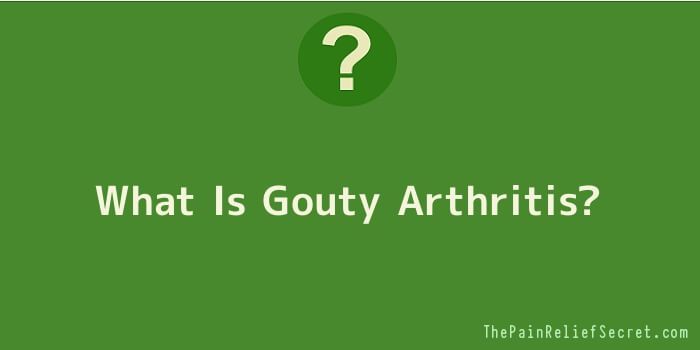
Gouty arthritis is a painful inflammation of a single joint that is usually caused by defects in uric acid metabolism, which results in acid deposits in the joints and blood.
Five percent of all cases of arthritis are categorized as gouty arthritis. Gouty arthritis usually ends up affecting a single joint and most typically, the large toe of an individual. Although, it can also affect the foot, ankles, knees, wrists, fingers and elbows.
It is very rare in children and younger adults. It is also known that men are more likely to develop gouty arthritis than women. Women affected have usually past menopause.
In 2011, it was noted that nearly 6% of men and 2% of all women have a form of gout which comes to be about 8 million people in the country.
The symptoms of gout are unmistakable. Symptoms can cause the affected person, considerable amount of discomfort and pain. A significant amount of people may notice the following symptoms:
1. Severe pain in their joints.
Those with gout may experience significant pain in different joints; ankles, hands, feet, knees, and fingers. The most commonly affected joint is the big toe.
The primary symptoms of gout can last for about a week, sometimes more if left untreated.
2. Itchy skin.
Gout can cause those affected to have very itchy skin after their pain subsides. This is primarily caused by the body’s antibodies trying to decrease inflammation.
3. Inflammation.
The affected individual will notice significant inflammation in their affected joints.
4. Fever.
Some people notice that with gout a person may also experiences high fever.
5. Less flexibility.
This is very common as gout causes inflammation. The increase in inflammation causes the joint to be less fluid. Patients may notice a large decrease in flexibility.
Now, that we have discussed some of the well known symptoms of gouty arthritis, below, we will discuss some known effective treatments for gout arthritis.
First, it is known that non-steroidal anti-inflammatory drugs are effective in the treatment of gouty arthritis. They will help control the inflammation. This is important because the inflammation is the cause of the pain associated with gout arthritis. Non steroidal anti-inflammatory drugs include ibuprofen and naproxen.
Others include prescription drugs such as indomethacin. The prescription drugs are going to be more powerful and quicker to reduce symptoms.
Another effective treatment for gout arthritis is the use of Corticosteroid medications. For example, the drug, prednisone, may be able to relieve the symptoms associated with gout including inflammation and pain.
Corticosteroid medications can be administered both by oral (pill form) and by injection (directly into the joints). Corticosteroid medications are usually reserved for people who cannot take the other popular forms of treatment including, non steroidal anti-inflammatory.
There are also options to consider that may reduce the amount of complications associated with gout arthritis. These options include medications that are taken to block uric acid production, Xanthine oxidase inhibitors and medications that increase your body’s ability to remove uric acid.
Whenever you want changes to your health care, you must consult a professional. Your health care professional will be able to guide you to the proper procedures in order to relieve your symptoms and health problems.
